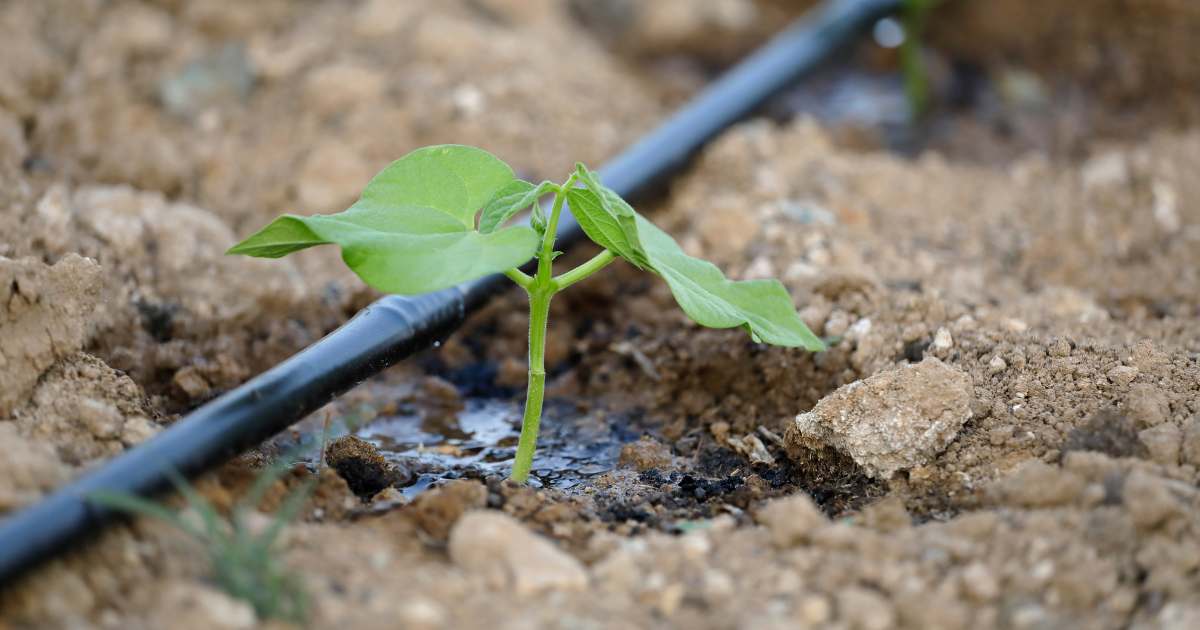
Water is life. No one understands this better than farmers. Yet, with irregular rainfall patterns, climate change and pollution severely affect agribusinesses where water is the lifeblood of the farm. Whether it’s quenching the thirst of livestock or irrigating crops, lower levels of safe, unpolluted water have dire consequences.
In the semi-arid and arid areas of South Africa, small-scale and subsistence farmers are facing challenges due to water availability and fair weather conditions. They struggle to provide adequate water when irrigating or have to face the fickle weather patterns when farming on dryland.
What is Climate-Smart Irrigation?
Climate-smart irrigation is directly related to climate-smart agriculture. This is an integrated approach that aims to manage farmland by addressing the challenges that climate change brings to these areas.
Practices such as climate-smart irrigation aim to maximise water efficiency. However, effective strategies don’t solely rely on irrigation technology alone. It also uses techniques that improve the soil’s water retention capabilities by addressing soil structure, compaction and organic materials.
It’s also important to note that employing climate-smart irrigation can lead to improved returns on investments.
What Type of Agribusinesses Should Use This?
Any type of agricultural farmer should pay attention to climate-smart irrigation. Whether you are a livestock farmer or a crop farmer, being clever about water usage can benefit all.
Crop Farming
In crop farming, agripreneurs can use a multitude of methods to enhance their irrigation strategies. One of these methods is to include LEPA. This stands for Low Energy Precision Application and is a type of water-efficient irrigation practice that uses low-pressure bubble applicators. With this type of sprinkler, it was found to apply at least 20% more water to the soil without having precious drops blow away in the wind.
Soil sensors also assist farmers with understanding their soil moisture level. This is helpful to determine if it is necessary to irrigate more or less, but basing it on data and not just a gut feeling.
Lastly, farmers can also prioritise crops that have lower water requirements. Furthermore, they can also plant varieties that are drought-tolerant.
Livestock Farming
Where animals such as goats, sheep or cattle graze in paddocks, dung helps to feed the soil, boosting its organic material, microbiome, and by extension, its water retention capability.
If farmers use strip grazing methods, growing fodder might also entail irrigating the grass before the animals feed on it. Good grazing management entails a water-efficient irrigation system and a schedule that ensures maximum application with minimal evaporation.
Other Climate-Smart Irrigation Techniques
Here are a few techniques that farmers can include for climate-smart irrigation.
Water management: Good water management means understanding how much water you have available, what your crops’ needs are and when the optimal time is for irrigation. Many of these tasks can be conducted manually, but there are also technologies available that make them easier.
Rain harvesting: By harvesting rainwater, like run-off from roofs, farmers can optimise their water source.
Build a dam with a covering: Whether it is used as a buffer dam or as a storage dam, using a covering helps prevent loss through evaporation and prevents contamination with leaves, dust or other residue that might blow into the dam.
Challenges You Might Face in Implementation
Farmers who are eager to use climate-smart practices face a few barriers. These are:
- Limited access to technology in rural areas
- High expenses when wanting to switch to climate-smart tools
- Knowledge gaps in climate adaptation techniques.
- Policy barriers prevent widespread implementation.
Real-Life Scenarios
If you feel that this is far-fetched that farmers truly use and benefit from these techniques, here are two examples that have been used in Africa:
In Zimbabwe, for instance, farmers have been facing severe droughts, risking famine with lower maize production and increased food insecurity. Their solution has been to plant drought-resistant maize and sorghum varieties.
Other countries, such as Egypt, have proved that smart irrigation, such as drip irrigation and solar-powered water pumps, is effective in efficient water distribution. It prevents waste while ensuring effective application with limited rainfall.
You can use these examples and the techniques listed above to help your farm become more efficient, waterwise and drought-tolerant. This is just the first step in transforming your agribusiness into a productive farm that uses climate-smart irrigation.






